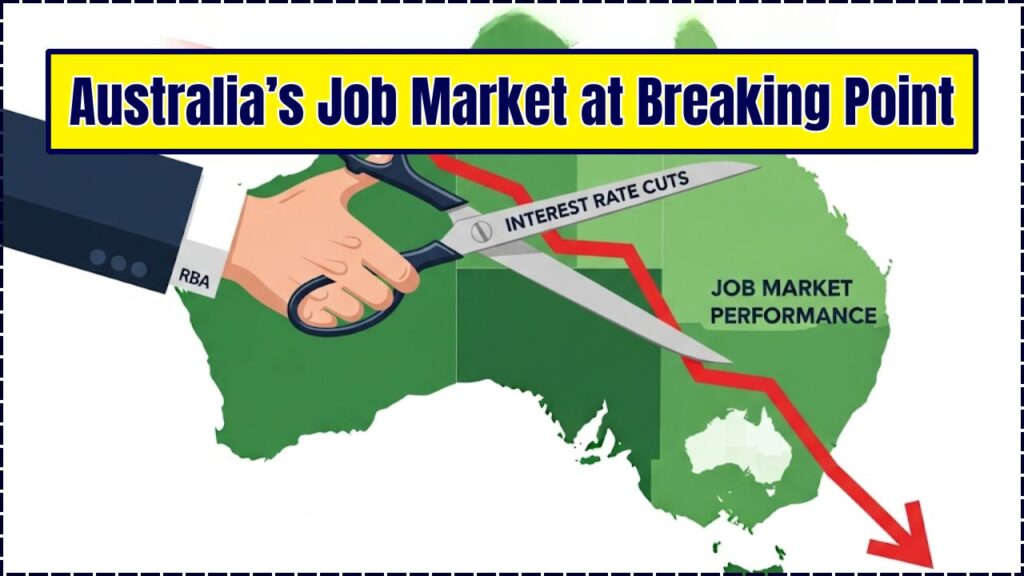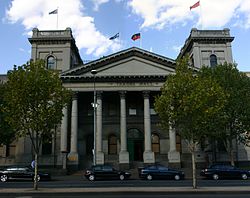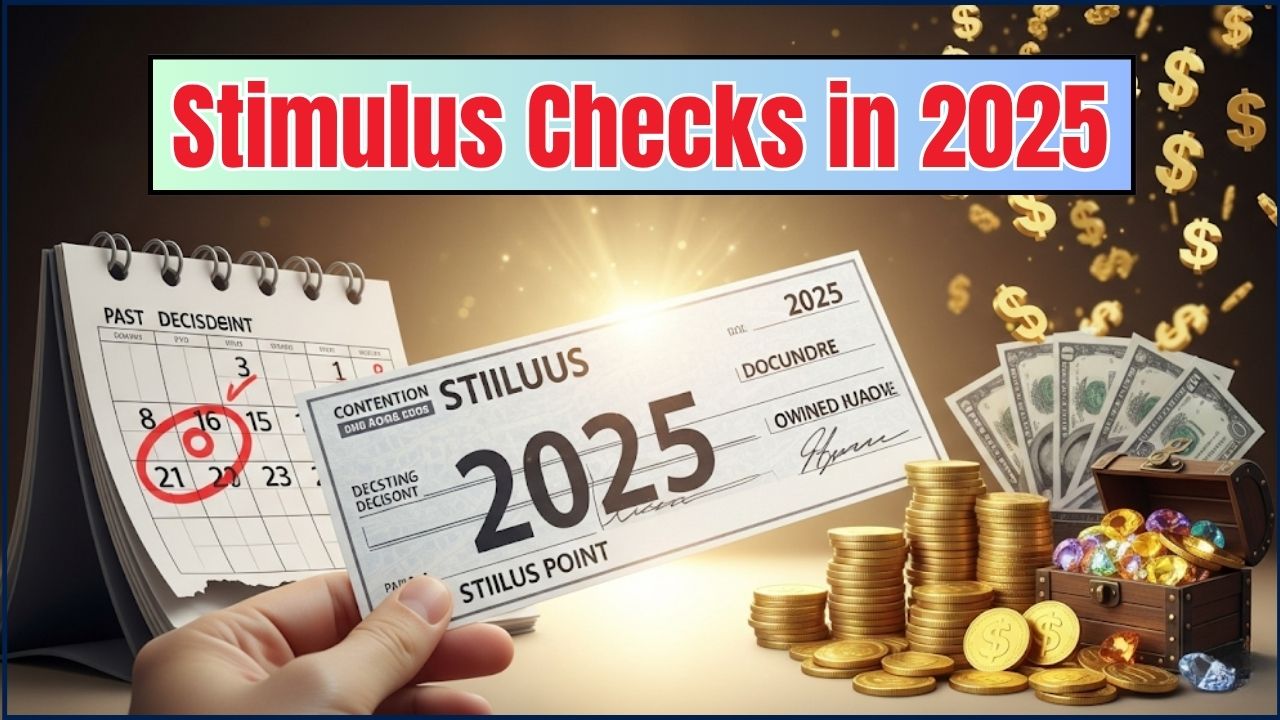Australia’s job market at breaking point? Yep, that’s the hot question making waves in financial circles right now. With the unemployment rate ticking up to 4.3%, the Reserve Bank of Australia (RBA) is being called out by economists and businesses alike to cut interest rates fast and hard. The idea is simple: if the labor market is cooling and inflation is falling, it’s time to give the economy a boost.

But is it really that simple? Let’s break it down so everyone—from Wall Street pros to high school seniors—can get a clear picture.
RBA Urged to Respond With Aggressive Cuts
| Key Point | Details |
|---|---|
| Unemployment Rate | Rose from 4.1% to 4.3% in June 2025 |
| Private Sector Hiring | Only 53,000 jobs added in 2024, much lower than average |
| Inflation Levels | CPI at 2.1%, trimmed mean at 2.7% in June quarter |
| Current RBA Cash Rate | 3.85%, after a 50 basis point cut earlier this year |
| Next Rate Decision Date | August 11–12, 2025 |
| Economist Recommendation | Push for 50 basis point cut to fight rising unemployment |
Australia’s job market is feeling the heat, and the RBA has a choice to make. With rising unemployment and falling inflation, experts urge aggressive interest rate cuts to steer the economy back on track. Whether or not the central bank listens, now’s the time for individuals and businesses to prepare, plan, and stay alert. By understanding the issues and acting early, we can weather the storm—and maybe even come out stronger.
What’s Going on With Australia’s Job Market?
It ain’t pretty, folks. Australia’s once-booming job market is showing real signs of stress. The government’s own stats show that the unemployment rate crept up faster than anyone expected. And while a little movement in the jobless rate might be normal, the real problem lies in where job growth is coming from.
Most new jobs? They’re in the government-funded sectors like healthcare, education, and the NDIS (National Disability Insurance Scheme). That’s not necessarily bad, but when the private sector (aka the business world) barely adds jobs, that’s a red flag.
“We’re seeing a productivity slump tied to weak private-sector hiring,” says Dr. Shane Oliver, AMP Chief Economist. “It’s time for the RBA to take bold action.”
Why Are People Calling for Interest Rate Cuts?
1. Inflation is Down
One of the RBA’s big jobs is keeping inflation between 2% and 3%. And guess what? We’re there. CPI is just 2.1%, and core inflation (a more stable measure) is at 2.7%. That means the RBA now has room to cut rates without worrying about overheating the economy.
2. Labor Market is Softening
Unemployment is rising. Job ads are down 1% in July, and private hiring has slowed dramatically. A cooling labor market can lead to lower consumer spending, weaker business confidence, and even recession if left unchecked.
3. International Risk Factors
Australia doesn’t exist in a bubble. With U.S.-China trade tensions ramping up and global growth slowing, Australia needs to stay nimble. Lower interest rates can help stimulate investment and cushion the blow.
“Interest rates are a blunt tool, but when used right, they can be powerful,” says Citi Australia economist Josh Williamson.
Global Comparison: What Are Other Countries Doing?
Australia isn’t alone. Let’s see how other major central banks are reacting to similar trends:
| Country | Central Bank | Recent Rate Movement |
| United States | Federal Reserve | Held steady but signaled possible cuts in late 2025 |
| United Kingdom | Bank of England | Small rate cuts amid slowing growth |
| Canada | Bank of Canada | Cut rates by 25 bps in July 2025 |
This global cooling trend shows that Australia may need to act fast to stay competitive.
Job Market Trends: 2024 vs. 2025
| Metric | Early 2024 | Mid-2025 (Projected) | What It Means |
| Unemployment Rate | Around 3.9% | Climbing to 4.2% or higher | More people are looking for work, putting downward pressure on wages. |
| Full-Time Job Growth | Strong | Slowing or declining | The economy is creating fewer secure, well-paying roles. |
| Underemployment Rate | Around 6.5% | Likely increasing | People with jobs want more hours, a sign of hidden slack in the market. |
| RBA Cash Rate | 4.35% | 3.85% (after recent cuts) | The RBA has already started easing, but may need to do more. |
What Is the RBA Doing So Far?
Since February 2025, the Reserve Bank has cut rates by 50 basis points, taking the current cash rate to 3.85%. That’s a step in the right direction, but many say it’s just not enough.
At its July meeting, the RBA paused, saying it wanted to wait for more data. Some insiders suggest the bank is being too cautious and missing the chance to act early.
“The data is speaking loud and clear,” argues Capital Economics. “The RBA should cut by another 50 basis points now before conditions get worse.”
How Do Interest Rate Cuts Help the Job Market?
When the RBA cuts interest rates, here’s what happens:
- Borrowing gets cheaper for households and businesses
- Mortgage repayments drop, freeing up cash for spending
- Businesses invest more in growth and hiring
- Consumers spend more, boosting demand
It’s a ripple effect. Lower rates pump life into the economy, which in turn helps create jobs and support wages.
But here’s the kicker: if the RBA waits too long, that ripple could become a trickle.
Expert Opinions: What Do the Pros Say?
AMP Capital
“Private sector hiring is in the ICU. A 50bps cut is not radical—it’s necessary.”
Goldman Sachs Australia
“Monetary easing will support market confidence, particularly in small-cap and mid-cap stocks.”
The Australian Council of Trade Unions (ACTU)
“We need bold decisions from the RBA, or working families will bear the brunt of a mismanaged economy.”

What Should Everyday Aussies and Businesses Do Right Now?
For Households
- Review your mortgage: Check with your bank if you can refinance to a lower rate
- Budget wisely: Rising unemployment means job security is shaky; cut non-essential expenses
- Upskill: Consider online training in digital, tech, or healthcare sectors
- Use government support tools: Check out Services Australia for available benefits
For Businesses
- Hold off on layoffs: If the RBA cuts rates, conditions may improve
- Access grants or support: Check business.gov.au for funding options
- Reinvest in automation: Improve productivity to stay competitive
- Apply for wage subsidies if eligible through JobTrainer or industry schemes
What Happens If the RBA Doesn’t Cut Rates?
If the RBA chooses to play it safe and doesn’t cut rates, we could see:
- A deeper slowdown in hiring
- Stagnant wages and lower job mobility
- Rising default risks as mortgage pressure builds
- Increased chance of recession in 2026
In short, the stakes are high.
FAQs
Is 4.3% unemployment really that bad?
For context, 4.3% is still considered relatively low. But the trend is what matters—rising unemployment + falling private hiring = trouble brewing.
Why doesn’t the RBA cut faster?
The RBA wants to avoid creating another inflation spike. They’re being cautious, but critics argue they’re being too slow to respond to real risks.
How can I protect my finances if the economy slows down?
- Reassess spending
- Build an emergency fund
- Invest in job-relevant skills
- Talk to a financial advisor
Will a rate cut guarantee job growth?
Not 100%, but it creates the right conditions for growth. It’s one of several tools policymakers use to keep the economy healthy.
Where can I track official updates?
Visit the Reserve Bank of Australia or ABS Labour Force pages for real-time data.
Final Thoughts
Australia’s economy is standing at a crossroads. With inflation under control and the labor market flashing warning signs, it’s time for the RBA to act decisively. Economists, businesses, and everyday Australians are looking for leadership and swift action. A bold interest rate cut may just be the medicine this economy needs.
And whether you’re a homeowner in Sydney or a small biz owner in Perth, staying informed and flexible is your best move right now.













